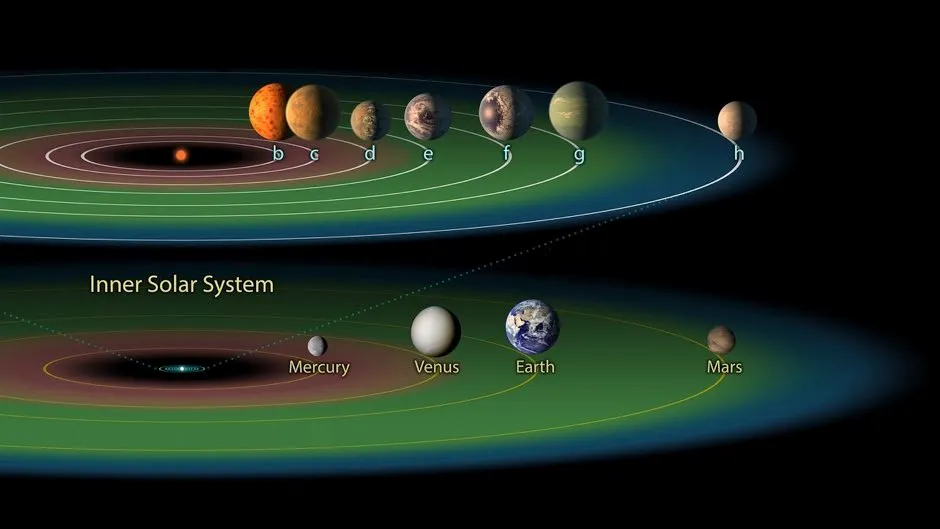It’s possible there could be a star out there somewhere in the Universe that is orbited by seven habitable planets, an astrobiologist at UC Riverside, California, has calculated.
The search for extraterrestrial life in outer space is typically focused on what scientists call the “habitable zone,” - the area around a star in which an orbiting planet could have liquid water oceans and a condition for life as we know it.
Astrobiologist Stephen Kane and his team created a model system in which they simulated planets of various sizes orbiting their stars. They used an algorithm that accounted for gravitational forces exerted by the host star and any orbiting planets and tested how they would interact with each other over millions of years.
Read more about exoplanets:
- Exoplanets: First image of multi-planet system around Sun-like star
- Giant exoplanets found to orbit star in 'gravitational dance'
- Two 'super-Earths' discovered orbiting nearby star
They found it is possible for some stars to support as many as seven habitable exoplanets, and that a star like our Sun could potentially support six planets with liquid water, though the existence of Jupiter, a large gas giant, makes it impossible in our Solar System.
Currently only a handful of stars are known to have multiple planets in their habitable zones but Kane and his team now plan to search for stars surrounded entirely by smaller planets.
These stars will be prime targets for telescopes such as the one at NASA’s Jet Propulsion Laboratory’s Habitable Exoplanet Observatory, and could offer insight into forces that might change life on our own planet one day.

“Although we know Earth has been habitable for most of its history, many questions remain regarding how these favourable conditions evolved with time, and the specific drivers behind those changes,” Kane said.
“By measuring the properties of exoplanets whose evolutionary pathways may be similar to our own, we gain a preview into the past and future of this planet — and what we must do to main its habitability.”
Reader Q&A: How large was the telescope that first detected an exoplanet?
Asked by: Edward Seymour, Hove
The first-ever image of a planet beyond the Solar System was taken in 2005 by astronomers using the European Southern Observatory’s Very Large Telescope (VLT) in Chile. Known as 2M1207b, the planet is about 1.5 times bigger than Jupiter and around 170 light-years away. It was detected using one of the VLT’s four gigantic telescopes, whose light-gathering mirrors are an impressive 8.2 metres across.
Read more: